Your cart is empty now.
The Puranas are eighteen in numbers. Sage Veda Vyasa composed them. There are references to Epics and Puranas in the vedic texts and also in the Sutra texts of Aapasthamba, Gauthama andothers. Many of the previous Puranas are extinct now and only those are available which are composed by Veda Vyasa
Agni, the fire God narrated this Purana to sage Vasishtha
The contents of this Purana clearly show that is has no sectarial leaning. It impartially treats of Vaishnava, Saiva, and Sakta forms of worship. It is more a compendium of Sanskrit learning than the advocacy of any particular form of religion. This Purana contains topics dealing with subjects like (Ayurveda), Silpa Sastra, Jyotish, Poetics etc.
The Purana which describes the occurrences of the Isana Kalpa and was related by Agni to Vasistha, is called Agneya. It consists of sixteen thousand stanzas distributed in three hundred and eighty-three chapters. The Puranas have obtained the name of Panchalakshana because their contents generally embrace five topics namely (1) Primary creation, or cosmogony, (2) secondary creation, (3) genealogy of gods and patriarchs, (4) reigns of the Manus, (5) history of the solar and lunar dynasties. The definition does not however necessarily signify that the Puranas exclusively deal with these topics only. On the contrary, every Purana dwells at length on one or more particular subjects and in some, these five primary topics occupy a very subordinate position. Our remark is particularly applicable to Agni Purana more than three-fourths of which have no connection however with the five principal topics. In the introduction Suta describes the subjects of knowledge, and therefore, the subject matter of this Purana, is two-fold—namely Parévidya, sacred knowledge or theology and Aparé Vedya, profane knowledge or the arts and sciences known to the people. The subject matter of the Agni Purana is thus described in the Introduction :—
AGNI said :— Vishnu is the fire of universal dissolution and I am Rudra. I will communicate unto thee the essence of learnings, the Purana, that is the cream of all sciences and the cause of all; (13) [Containing an account of] creation and dissolution, of various families, periods of Manu and genealogies. The Lord Vishnu assumes the forms of fish, tortoise & There are two sciences, superior and inferior. O twice-born one, the Vedas, Rik, Yayush, Saman and Atharvan, the six auxilliaries of the Vedas, namely (Siksha), the science of proper articulation and pronounciation, (Kalpa) ritual or cetemonial, (Vyakarana) grammar, (Nirukta) etymological explanation of difficult Vedic words (Jyotish) astronomy, (Chhandas) science of prosody, (Abhidhina) lexicon, Mimans8, Dharma Sastras, Pura- nakas, Nyaya, médical science, musical science, the science of archery and Political economy-—these all are the inferior sciences. The superior science is that by which Brahma is comprehended (t4—17). I will describe unto thee the great Purana, Agni, containing the great and eternal science of Brahma, that which is invisible, incomprehensible, stable and eternal; and is the cause of fish and other forms, recounted unto me by Visbnu and unto the celestials in the days of yore by Brahm’ (18—19).
In the general treatment of the subjects the author, how- The general character. ever, does not stick to the five principal topics which should constitute a Purana. He even loses sight of the two-fold knowledge, divine and secular set forth by him originally in the introduction. He has introduced a number of topics, useful to men, without any system or method. His work is more like an Encyclopaedia, containing a virility of useful topics bearing on later Sanskrit learning for Vedic rituals are seen no where in the book.
The contents of this Purana clearly show that it has no sectarial leaning. It impartially treats of Vaishnava, Saiva, and Sakta forms of worship. It is more a compendium of Sanskrit learning than the advocacy of any particular form of religion. It is classed among the Zamasa or the delusive division of the Puranas. Professor Wilson thus remarks on the general character of this Purana.
"From this general sketch of the Agni Purana it is evident that it is a compilation from various works; that consequently it has no claim io itself to any great antiquity, although from the absence any exotic materials, it might be pronounced earlier, with perhaps a few exceptions, than the Mahomedan invasion. From the absence also of a controversial or sectarial spirit, it is probably anterior to the struggles that took place in 8th and 9th centuries of our era between the followers of Siva and Vishnu. As a mere compilation however, its date is of little importance, except as furnishing a testimony to that of the materials of which it is composed. Many of these may pretend no doubt to considerable antiquity, particularly the legendary accounts of the Avataras, the section on regal policy and judicature and genealogical chapters, how far the rest may be ancient is perhaps questionable, for there can be little doubt that the Purana, and comprehending such incongruous admixtures, is not the entire work as it at first stood. It is not unlikely that many chapters were arbitarily supplied about 8 org centuries ago, and a few perhaps even later, to fill up the chasms which time and accident had made in the original Agneya Purana."
He again remarks in his introduction to the Vishnu Purana :—
The cyclopaedia character of the Agni Purana, as it is now described, excludes it from any legitimate claims to be regarded as a Purana, and proves that its origin cannot be very remote. It is subsequent to the Itihaas, to the chief work on grammar, rhetoric, and medicine, and to the introduction of the Tantrik worship of Devi. When this latter took place, is yet far from determined; but there is every probability that it dates long after the beginning of our era.
Sample Pages
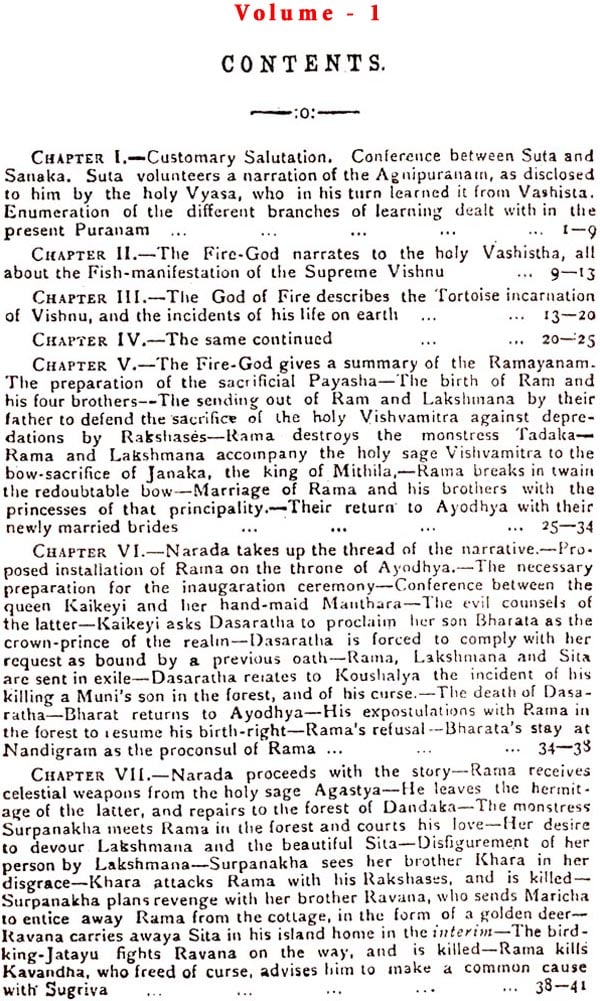
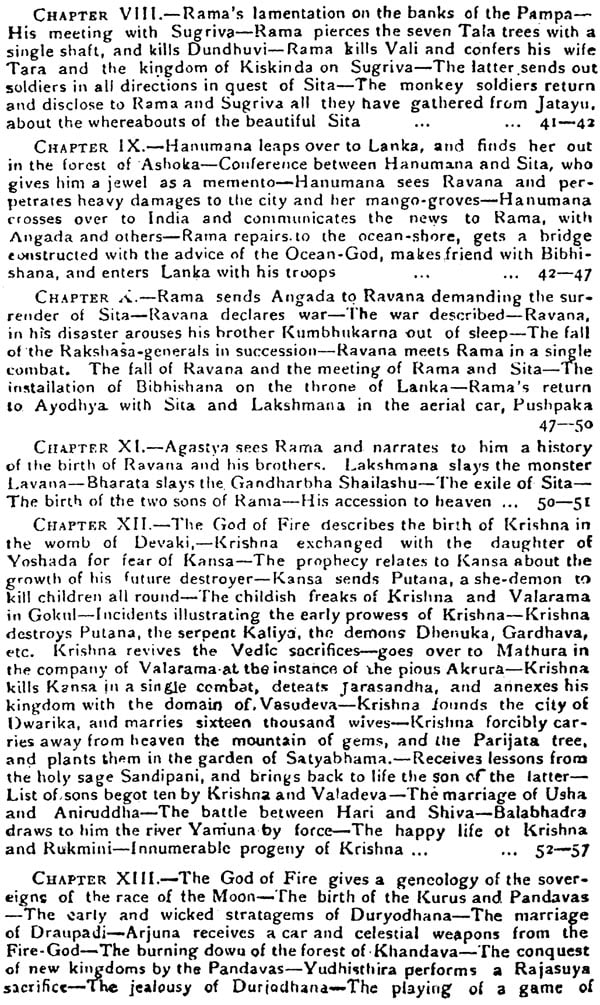
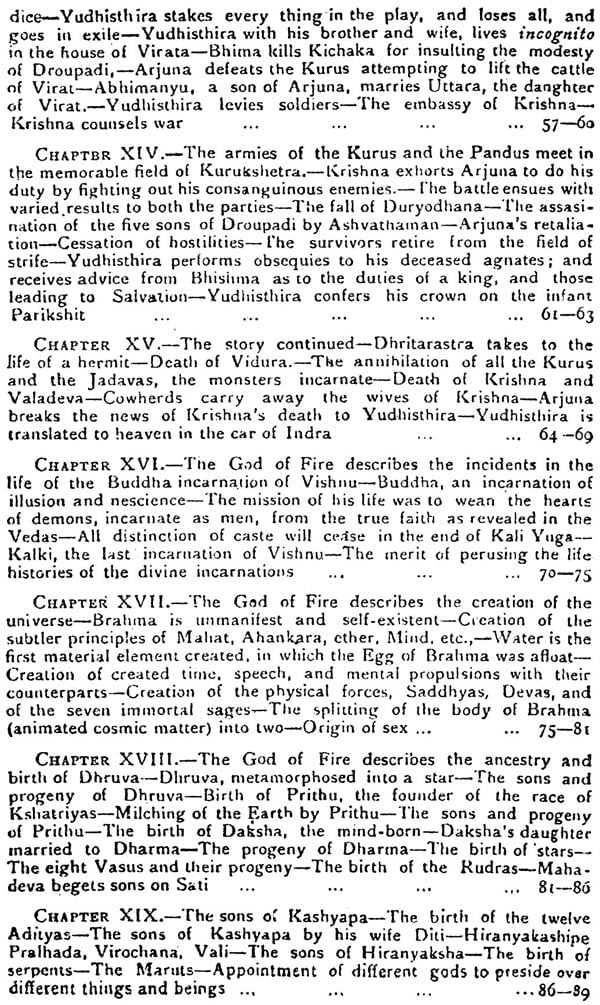
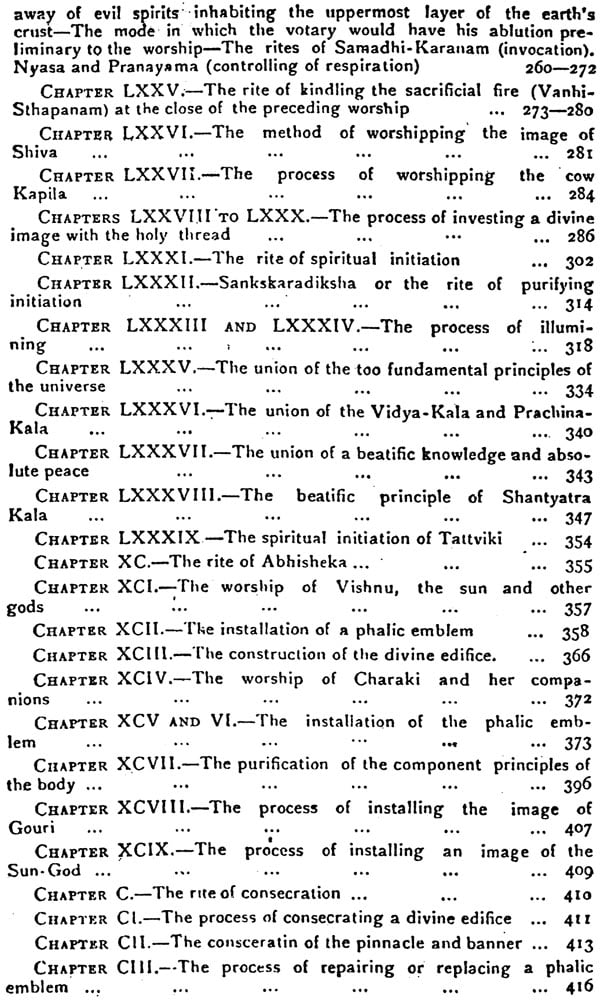
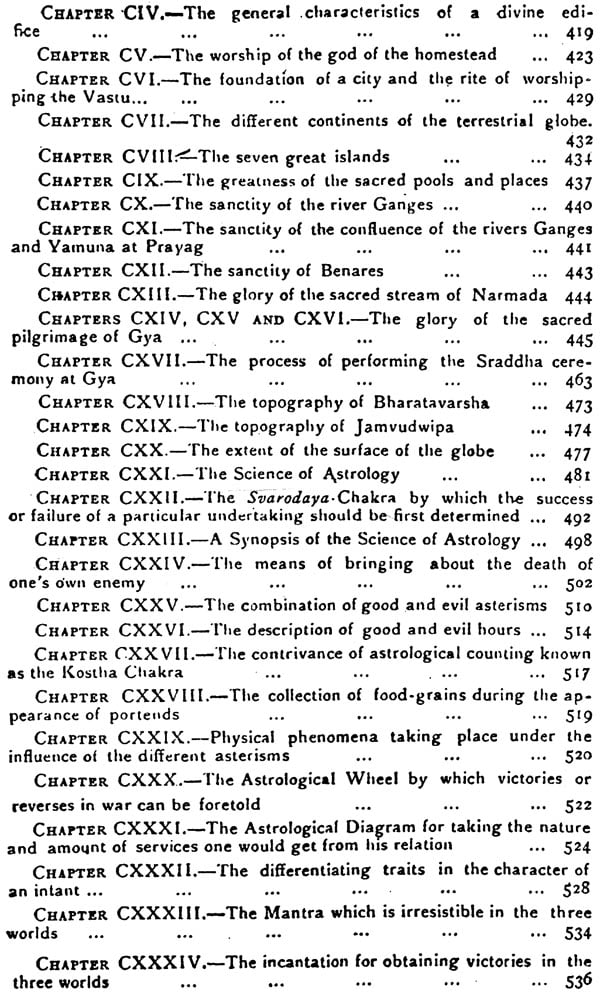
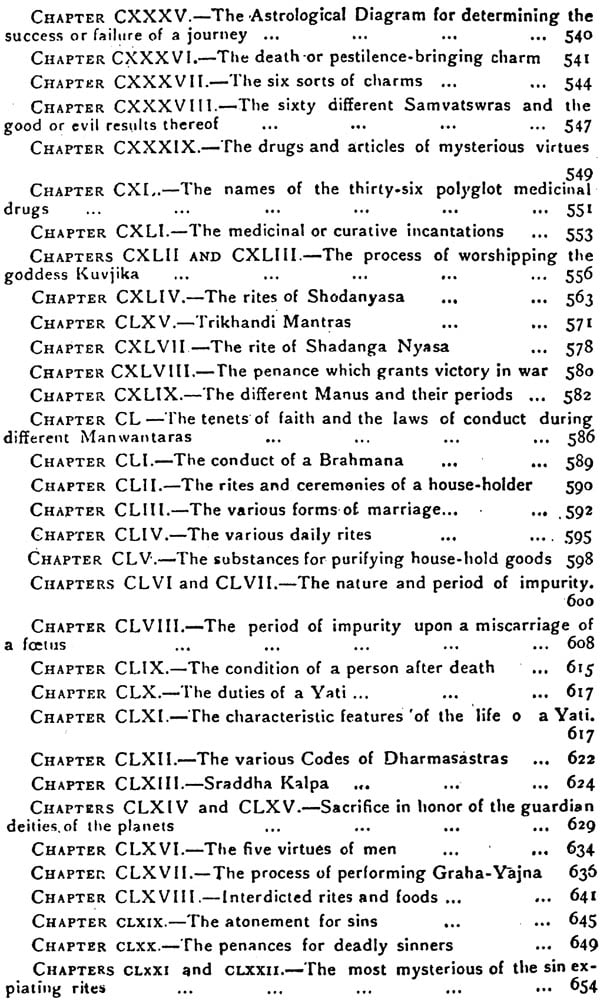
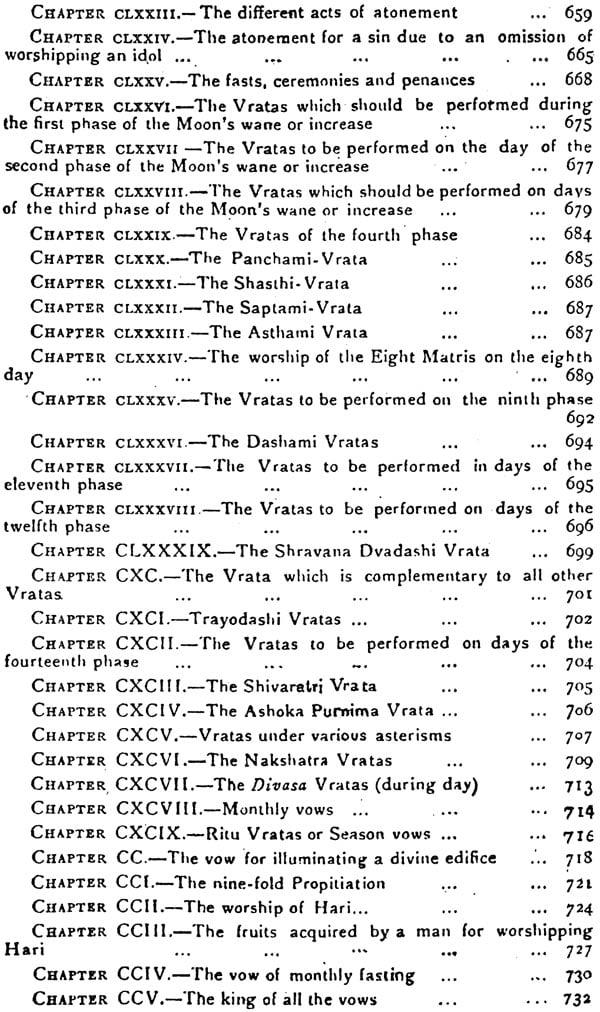
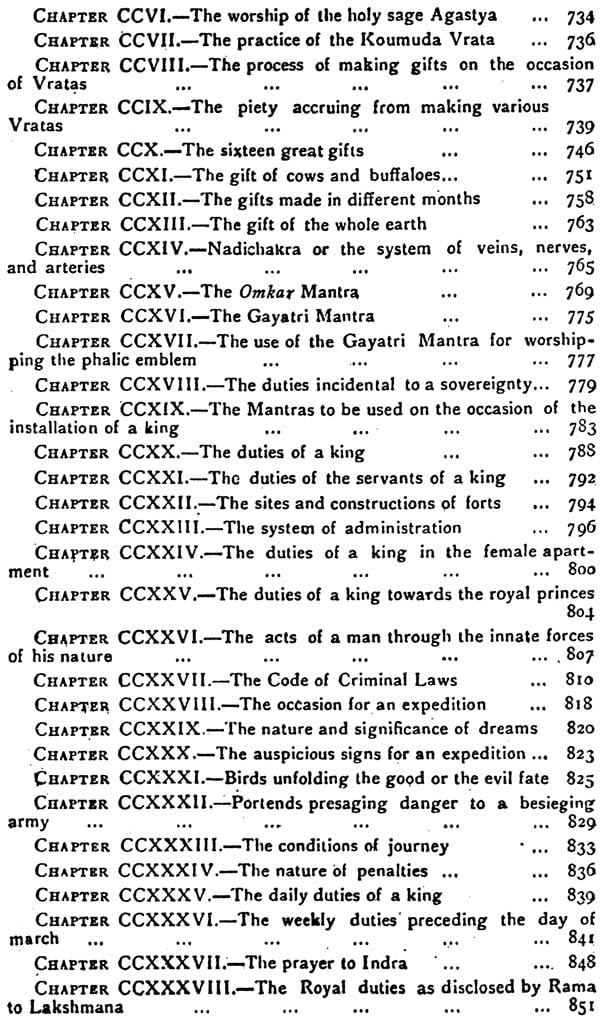

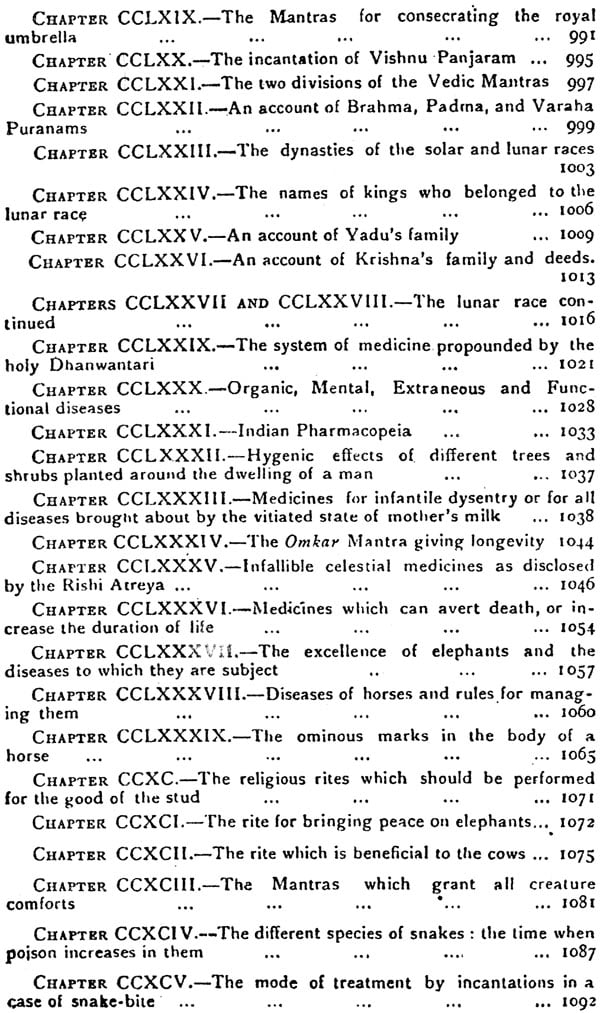
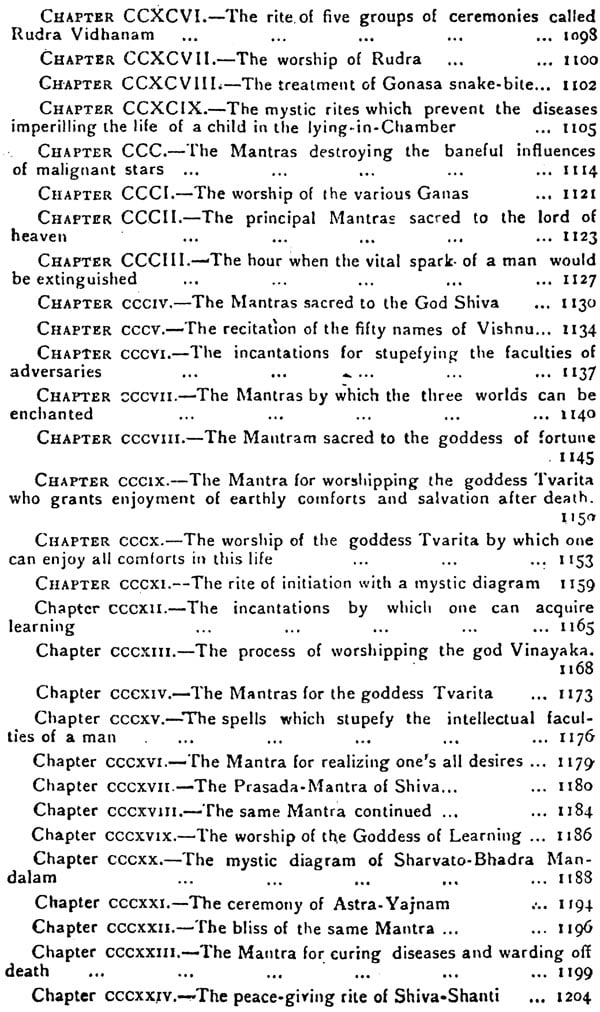
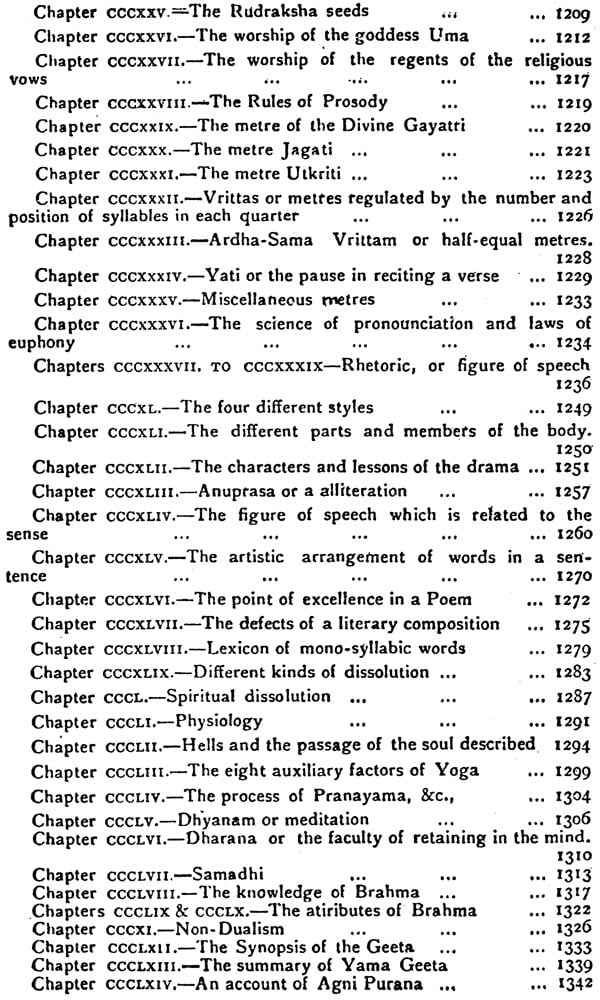
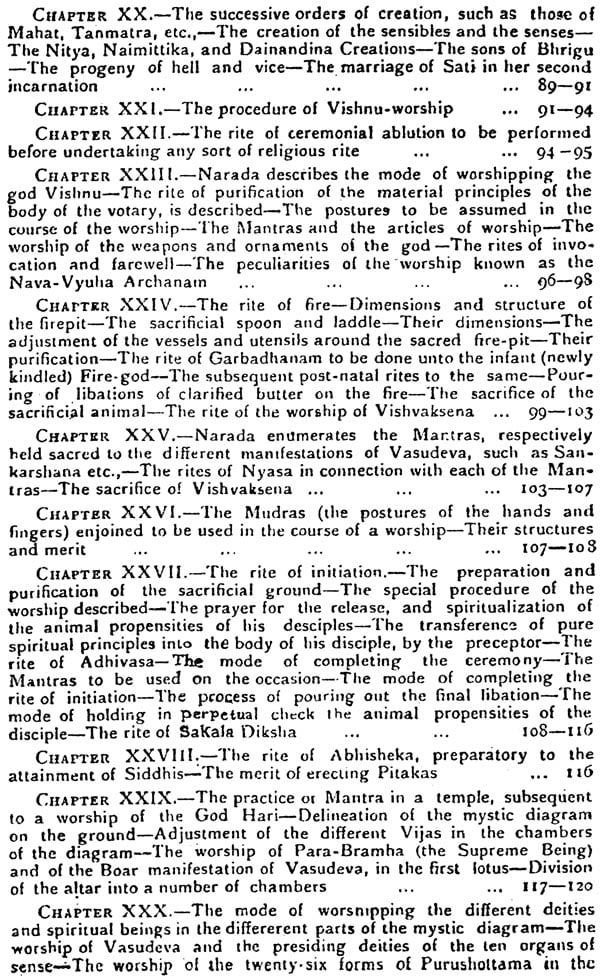
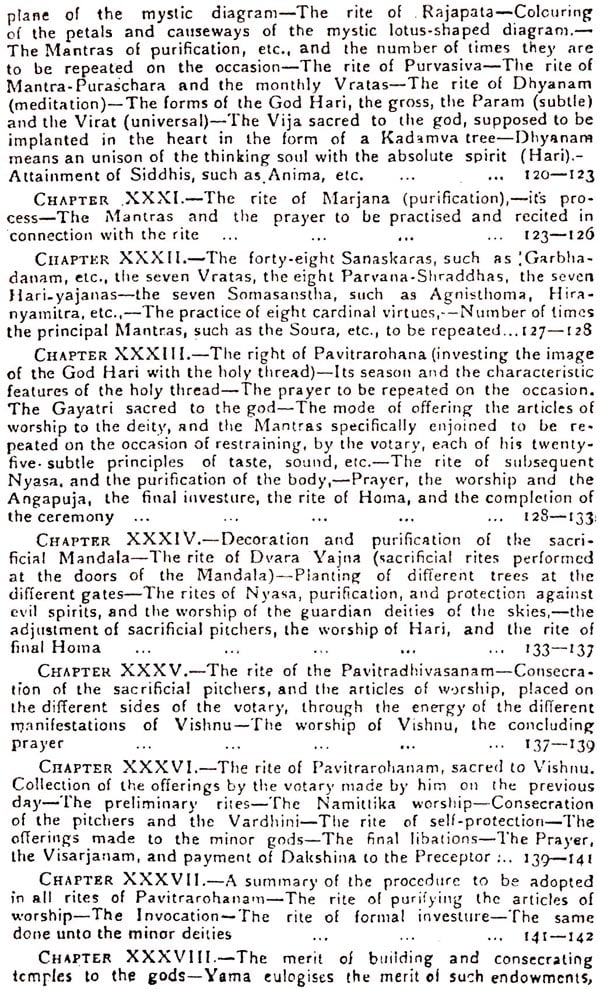
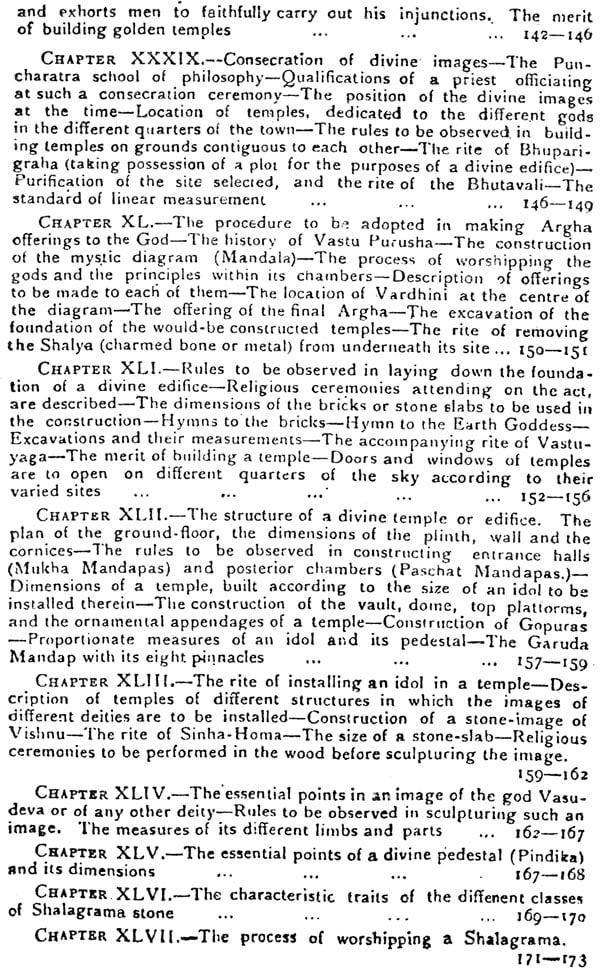

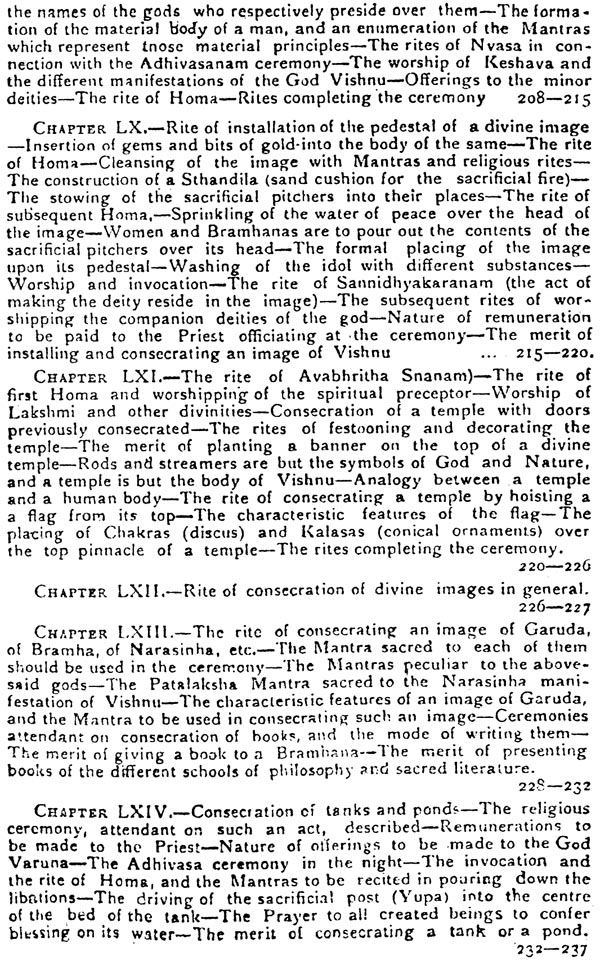
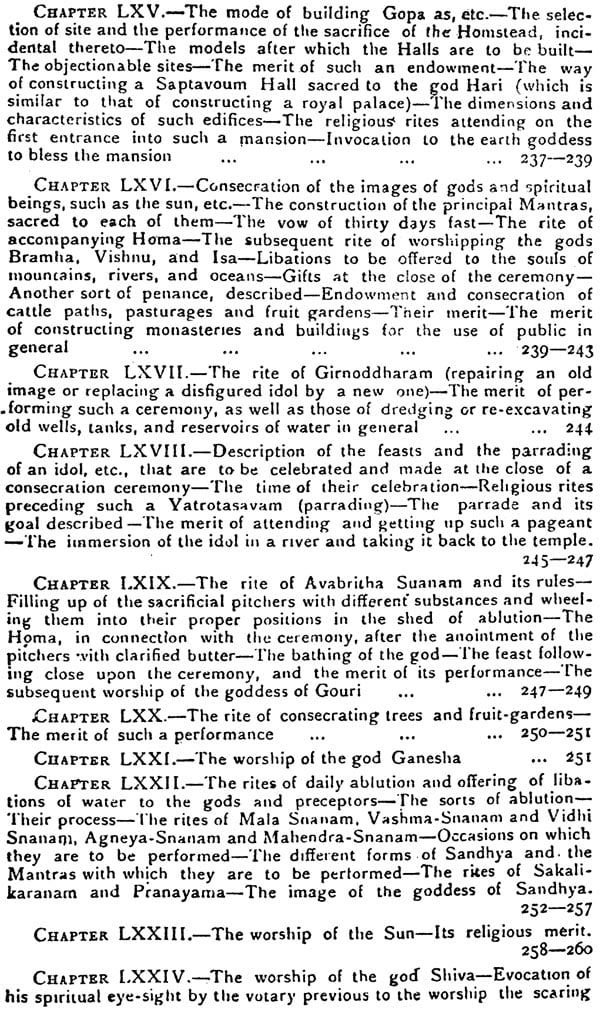
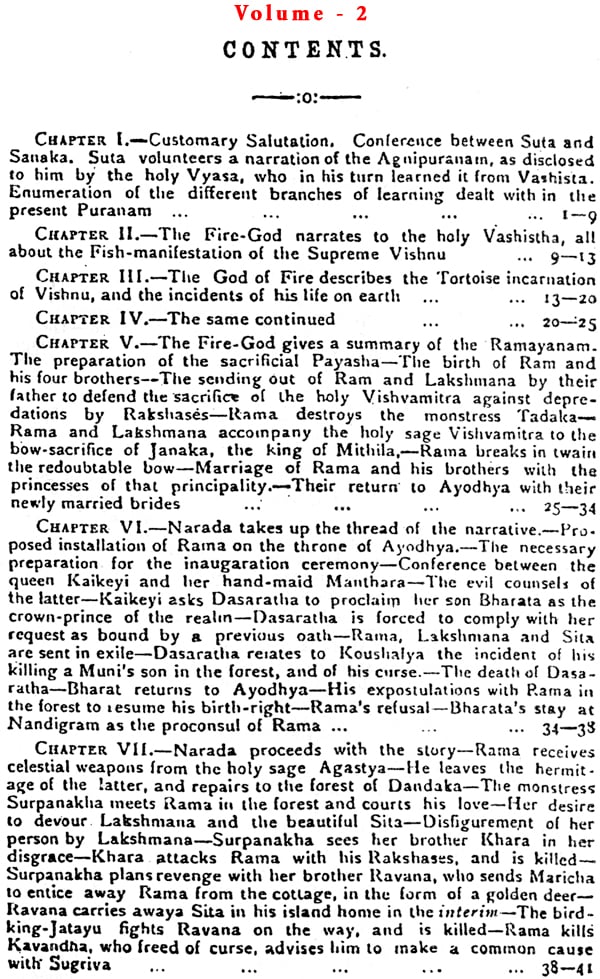
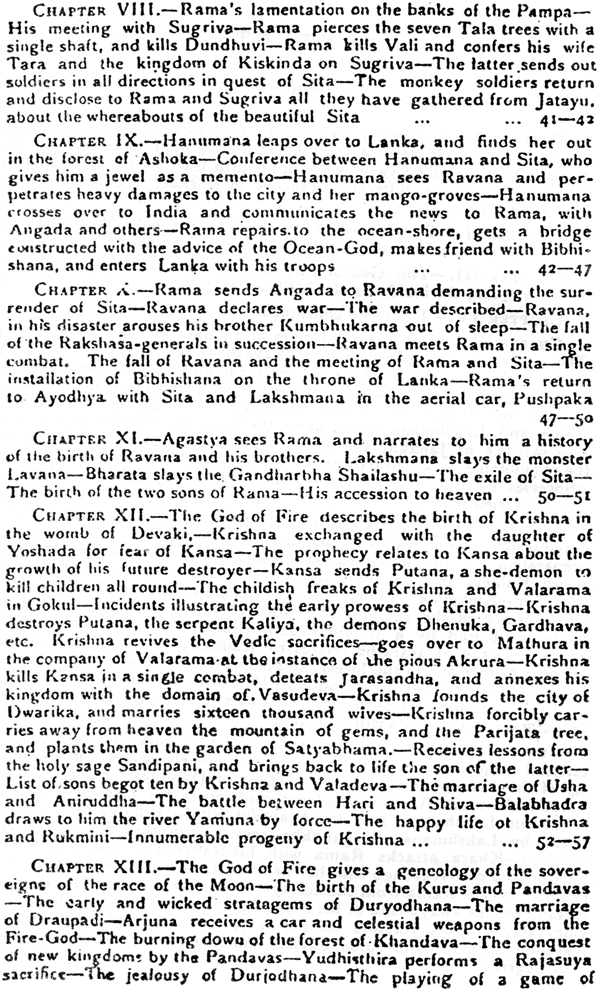
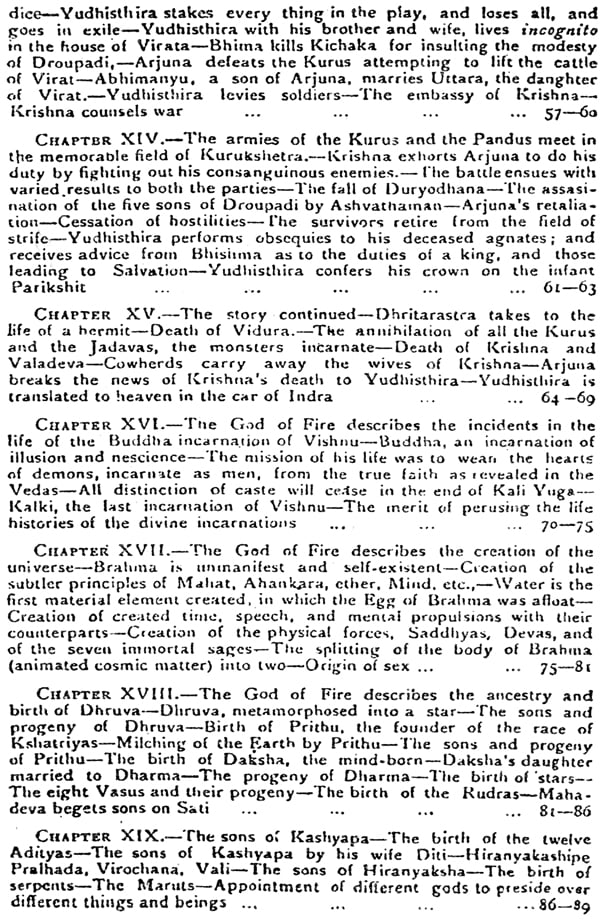
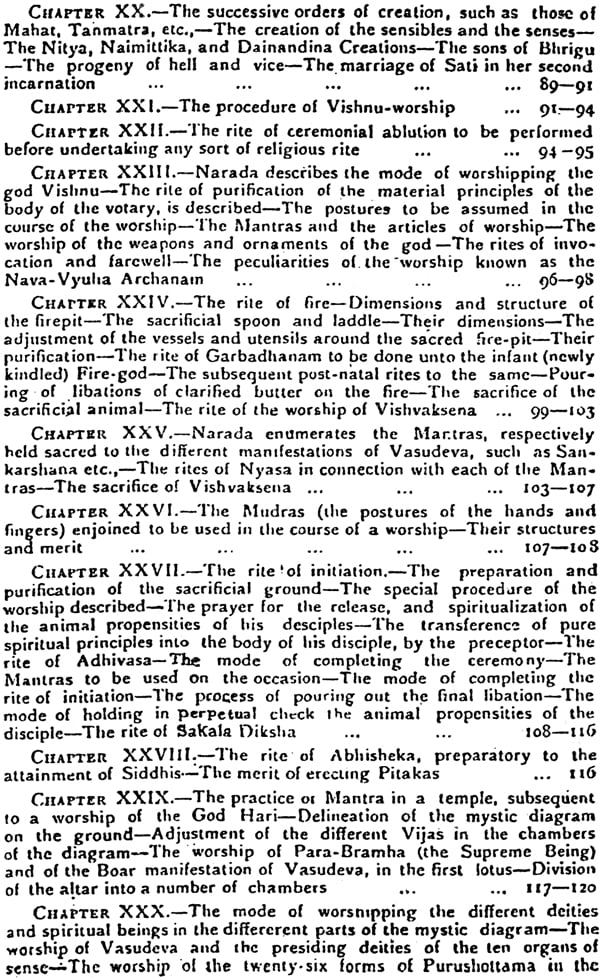
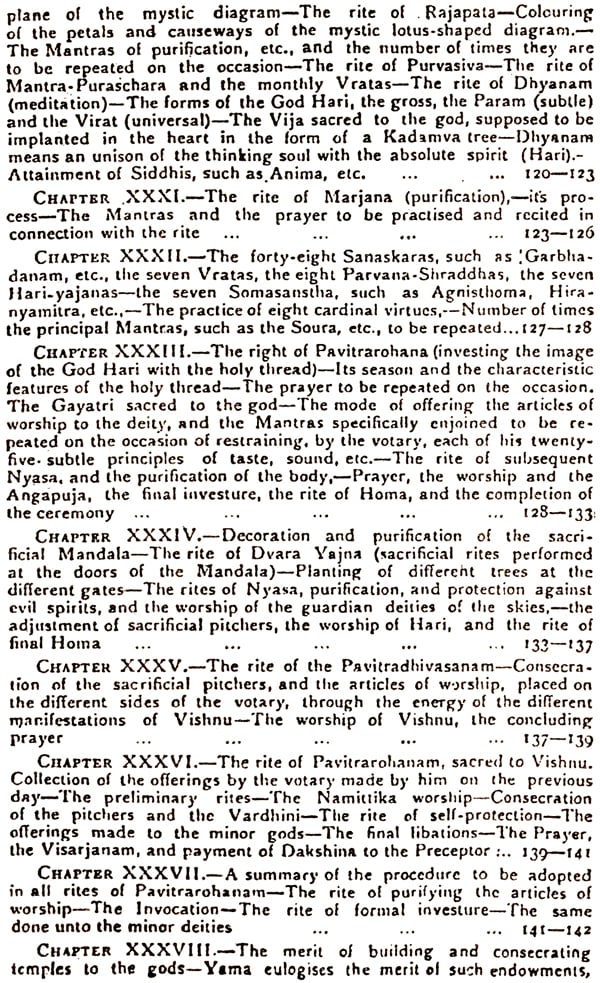
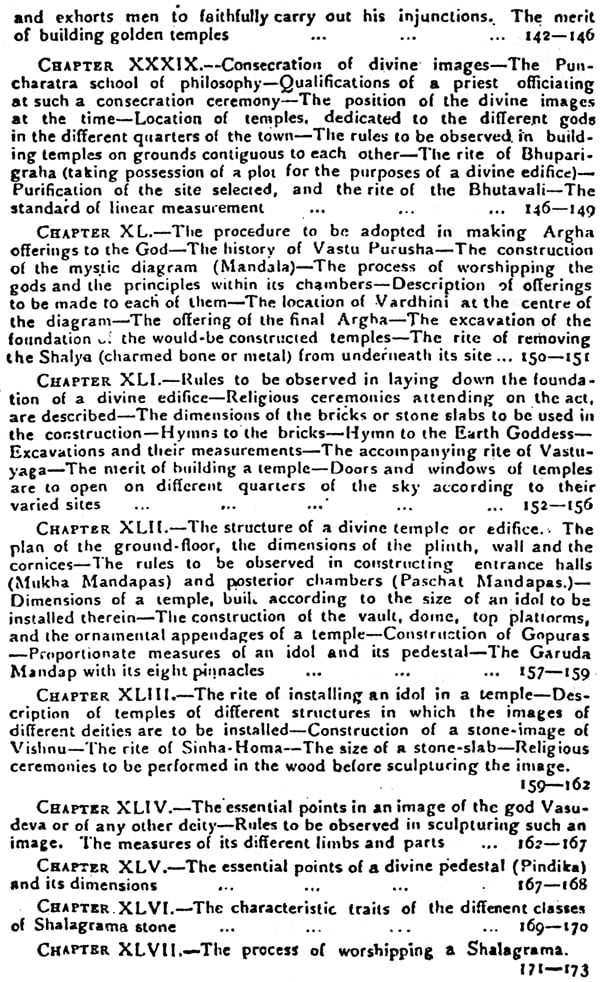

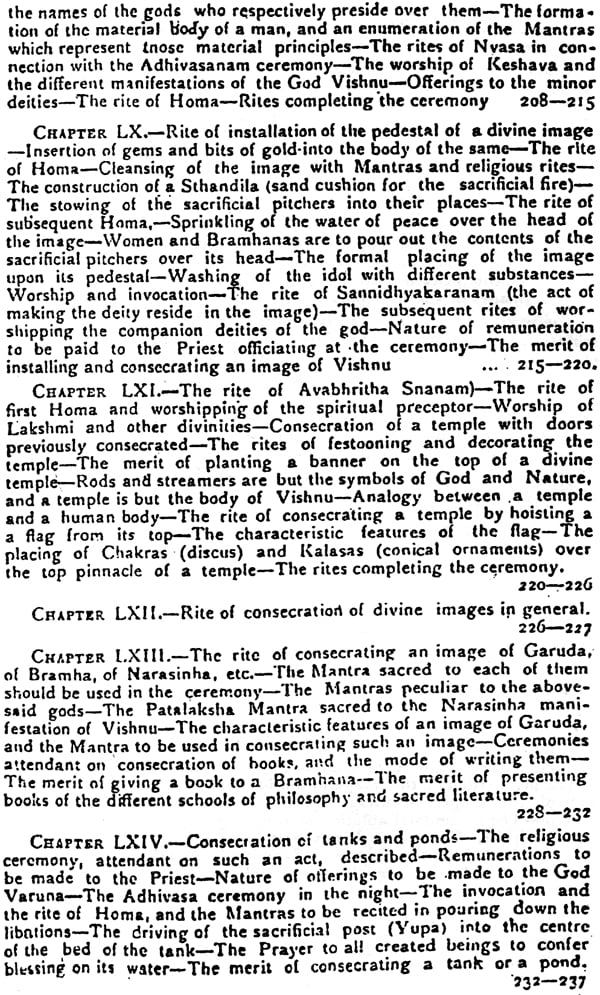
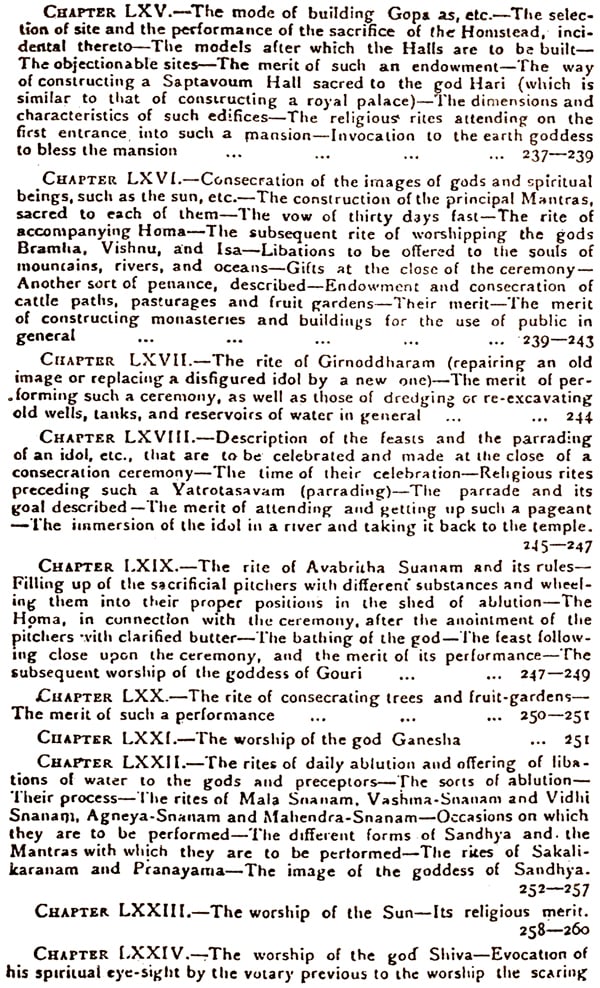
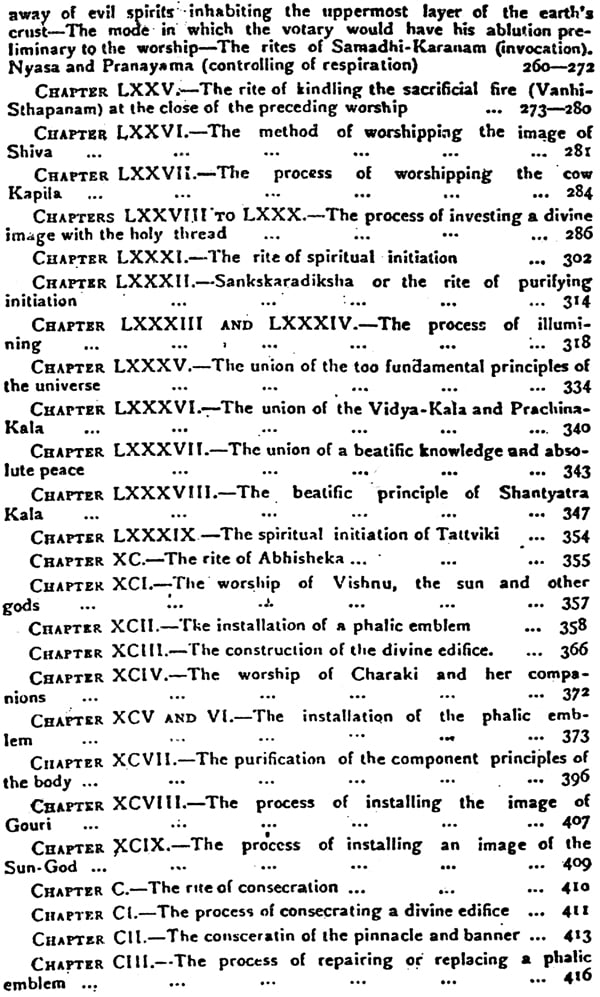
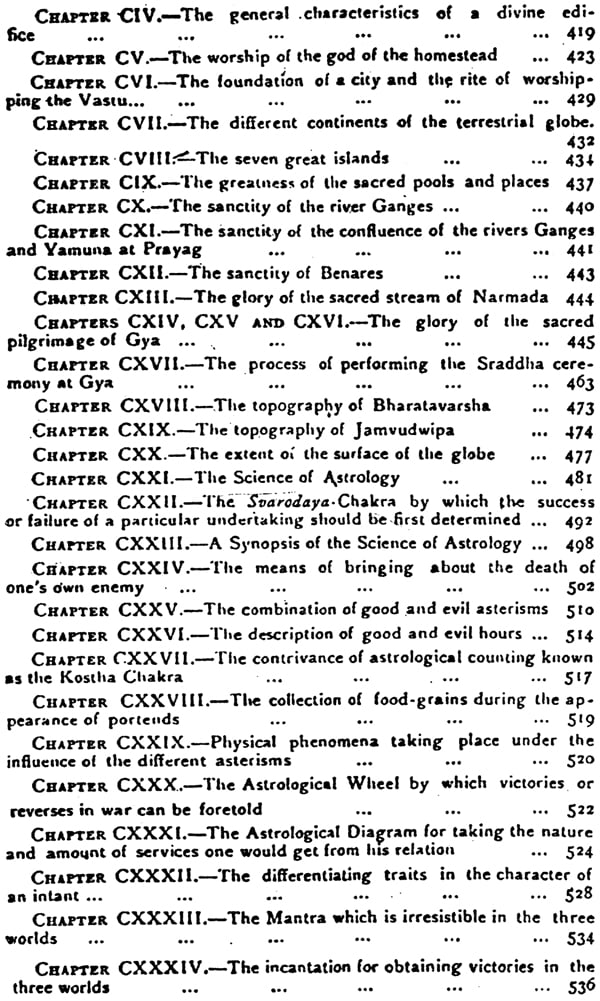
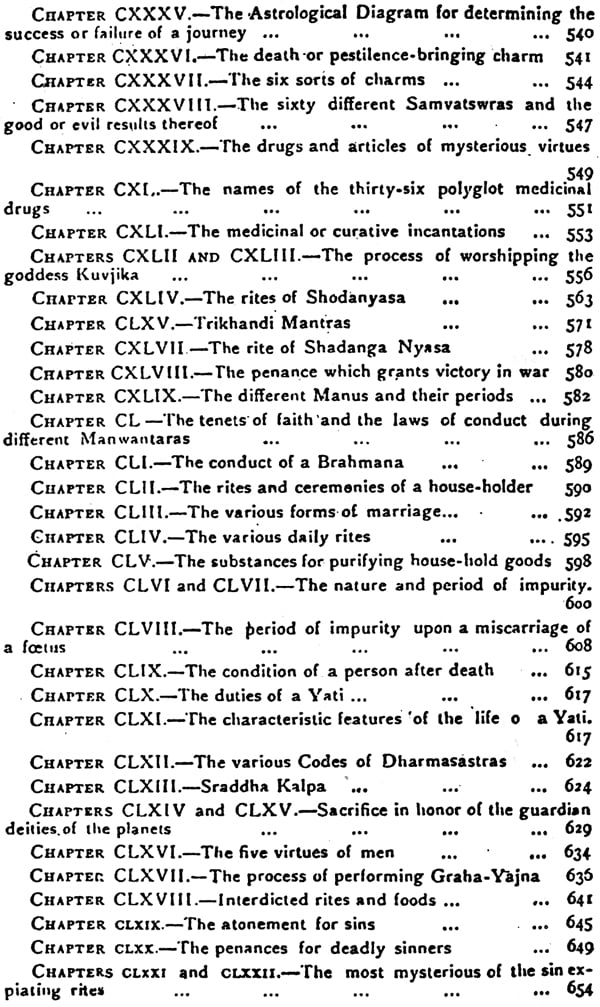
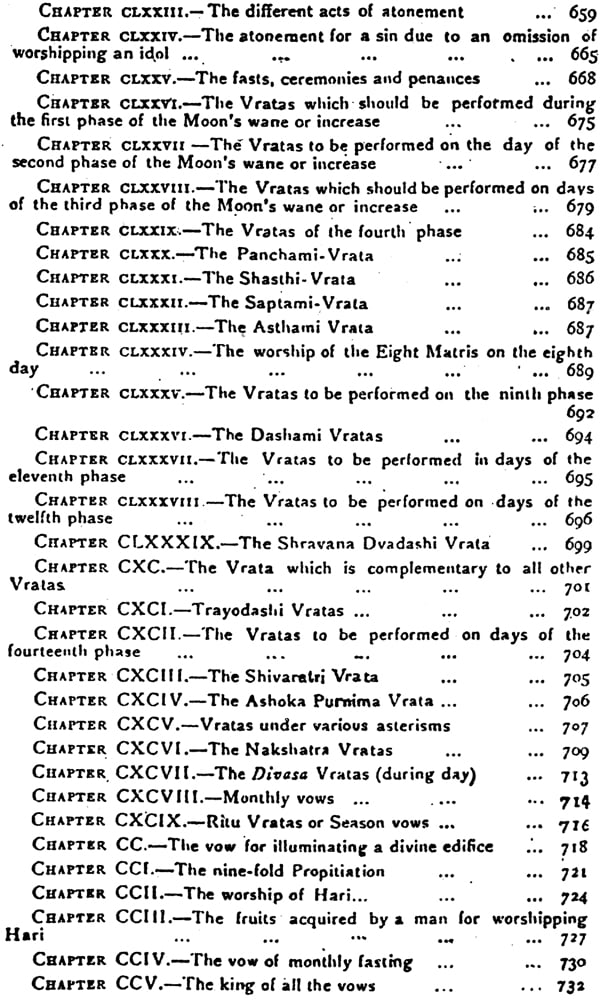
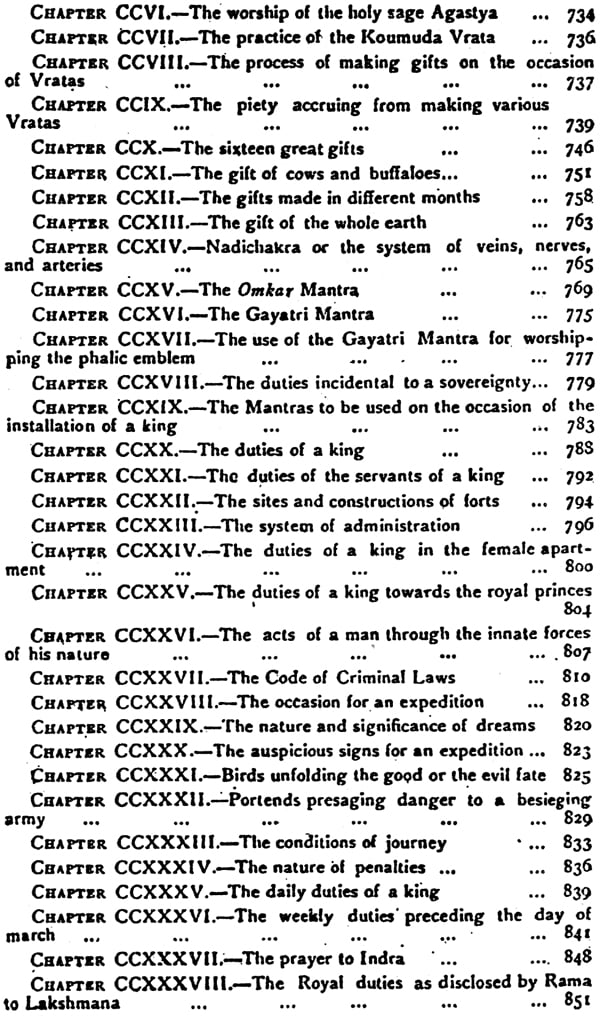
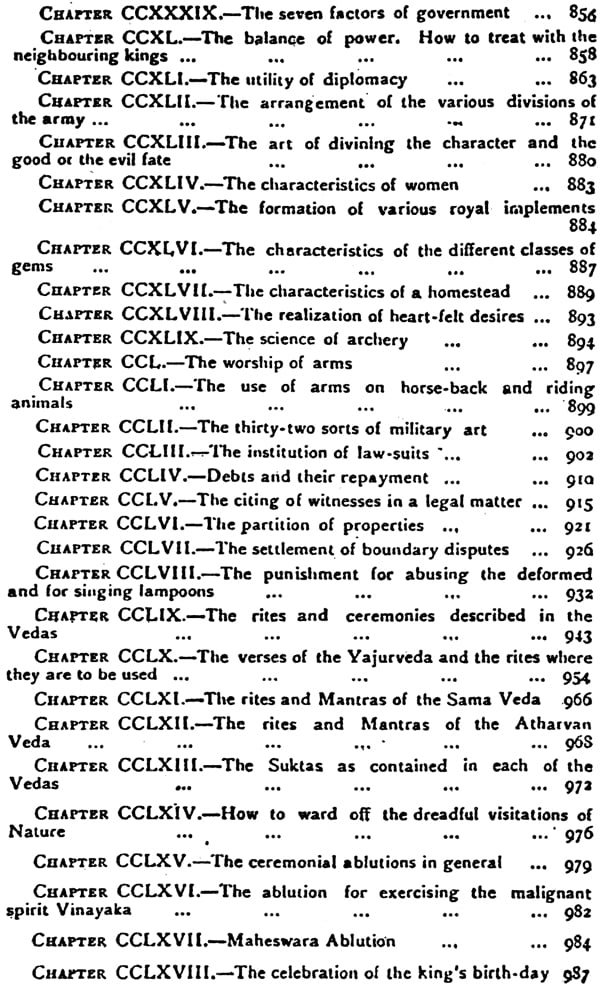
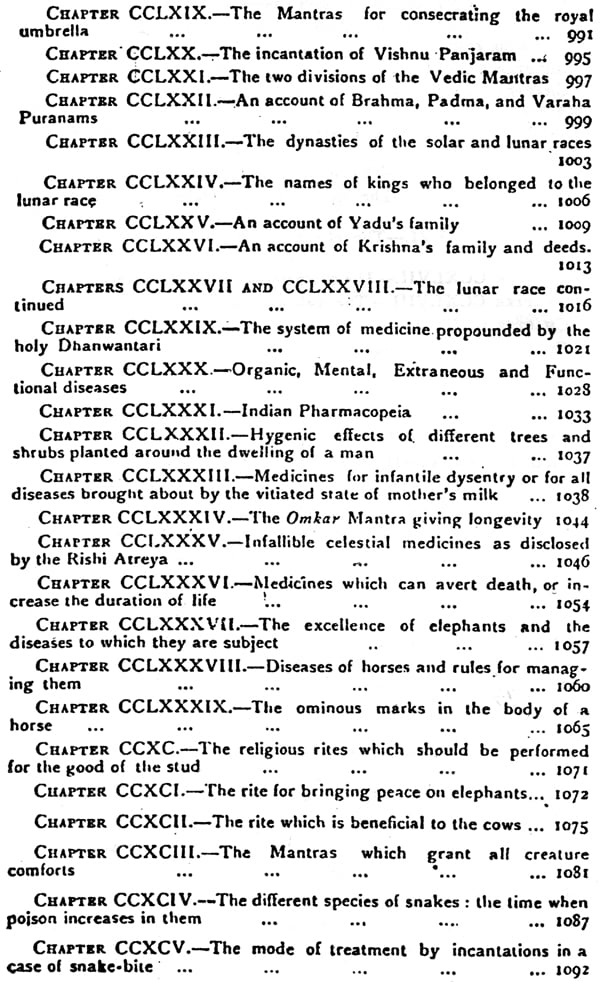
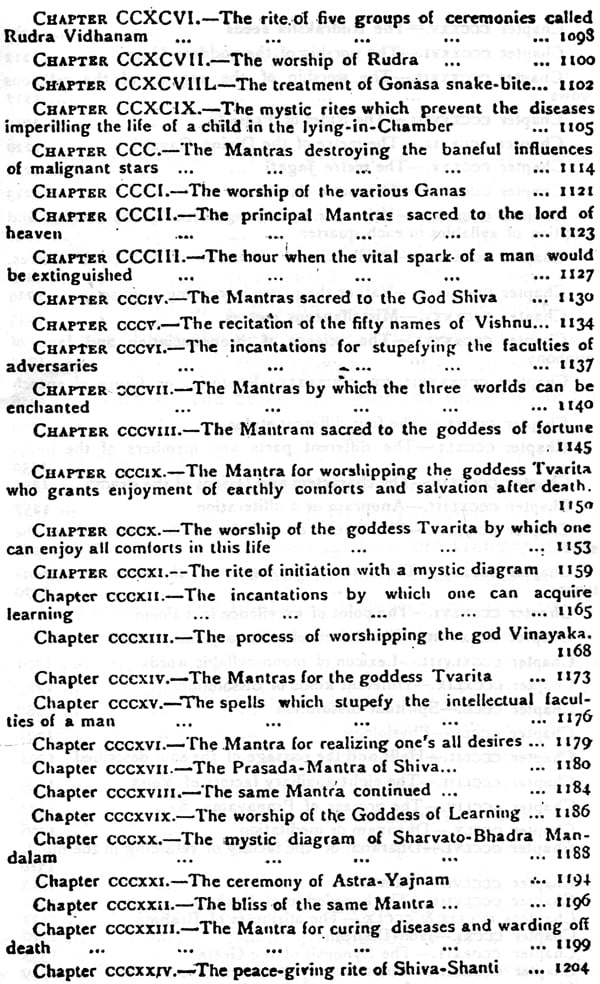
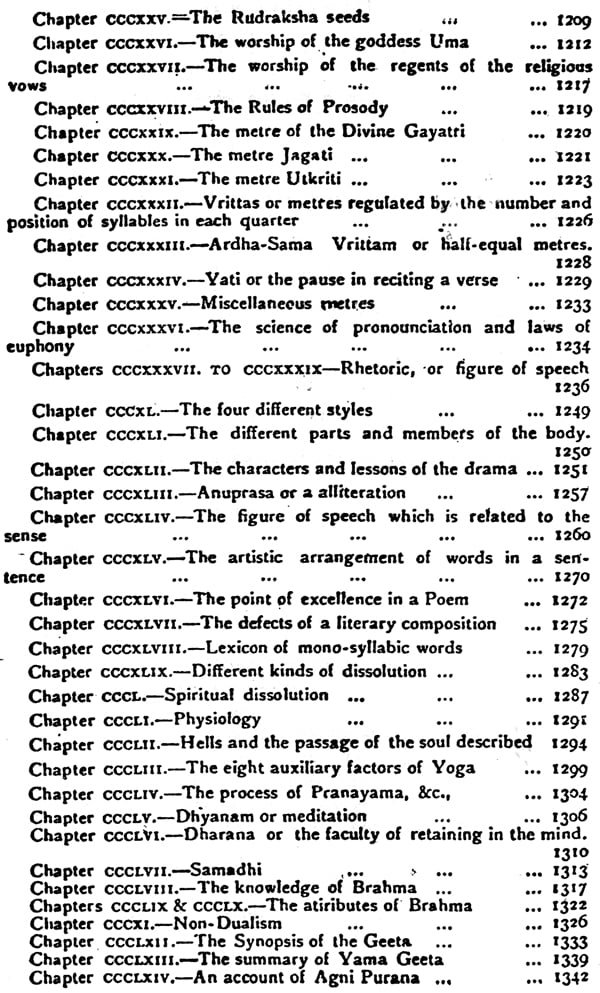
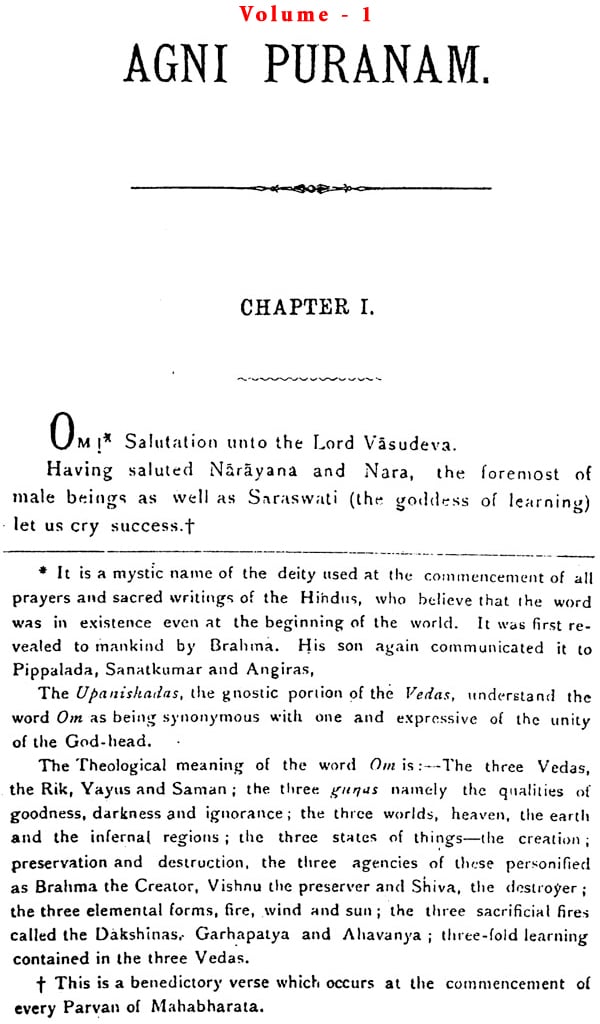
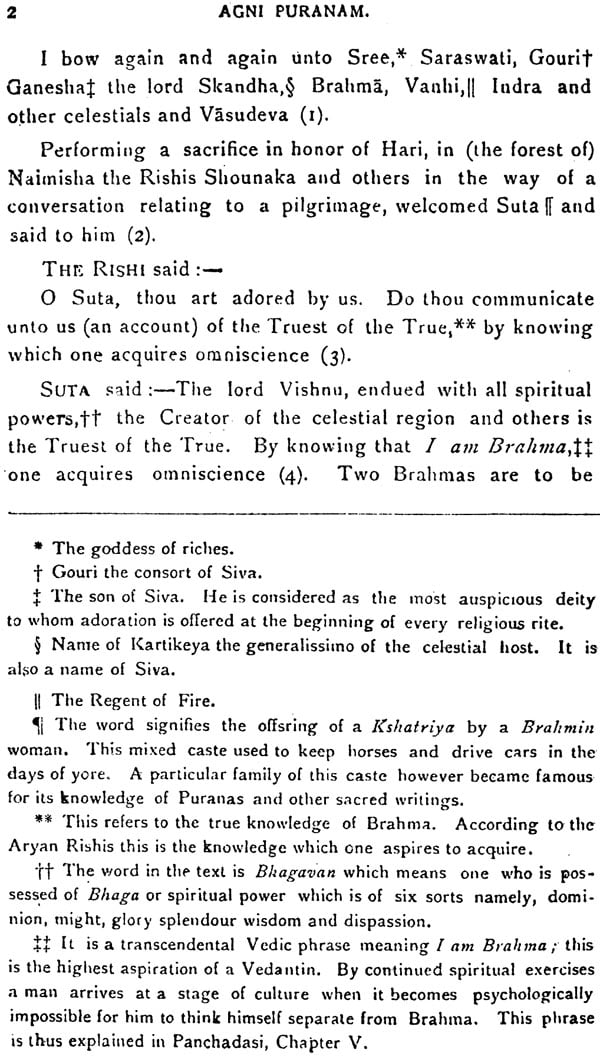
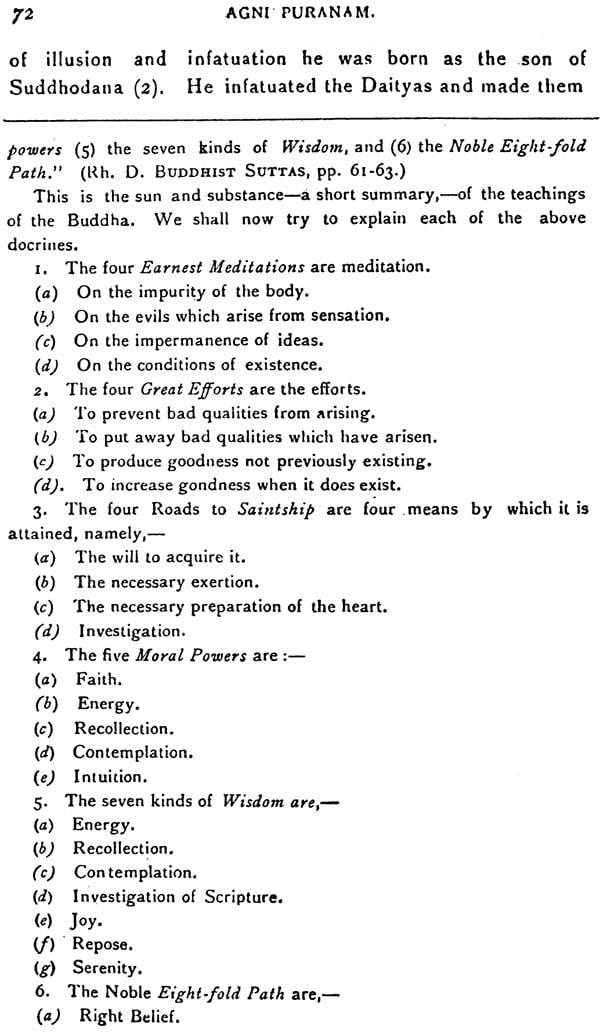
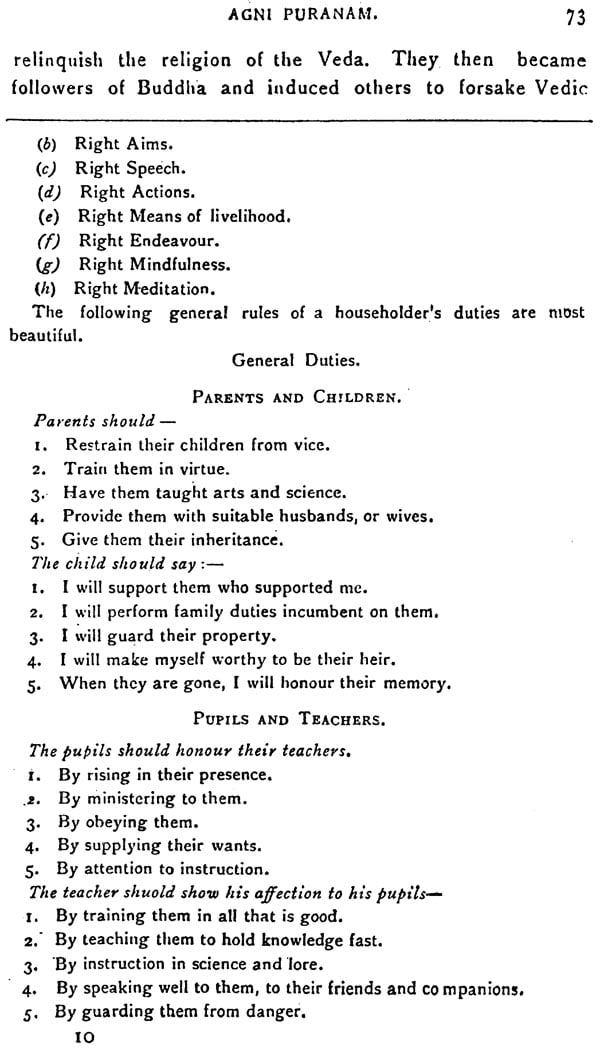
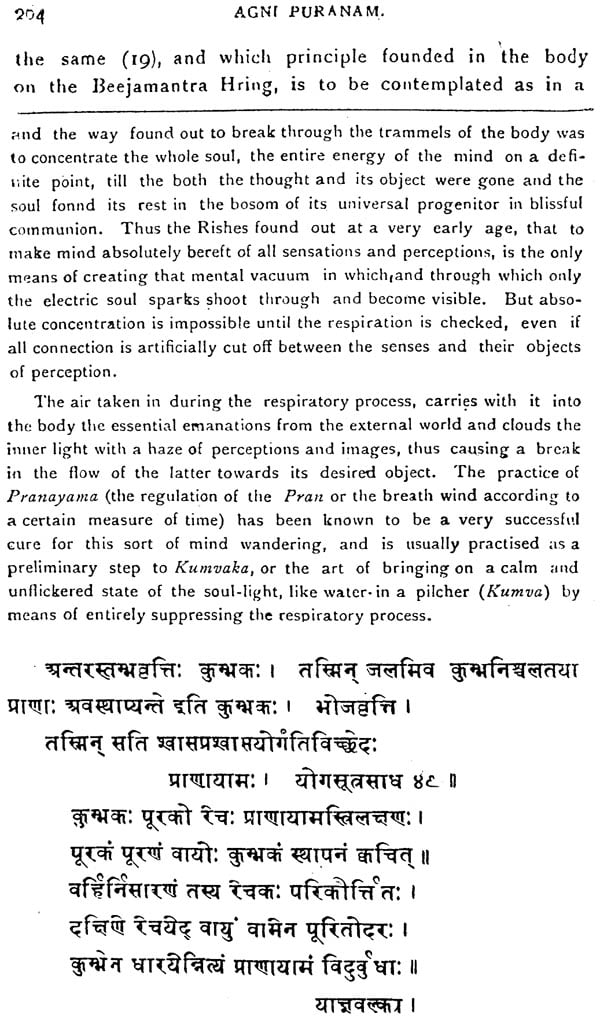
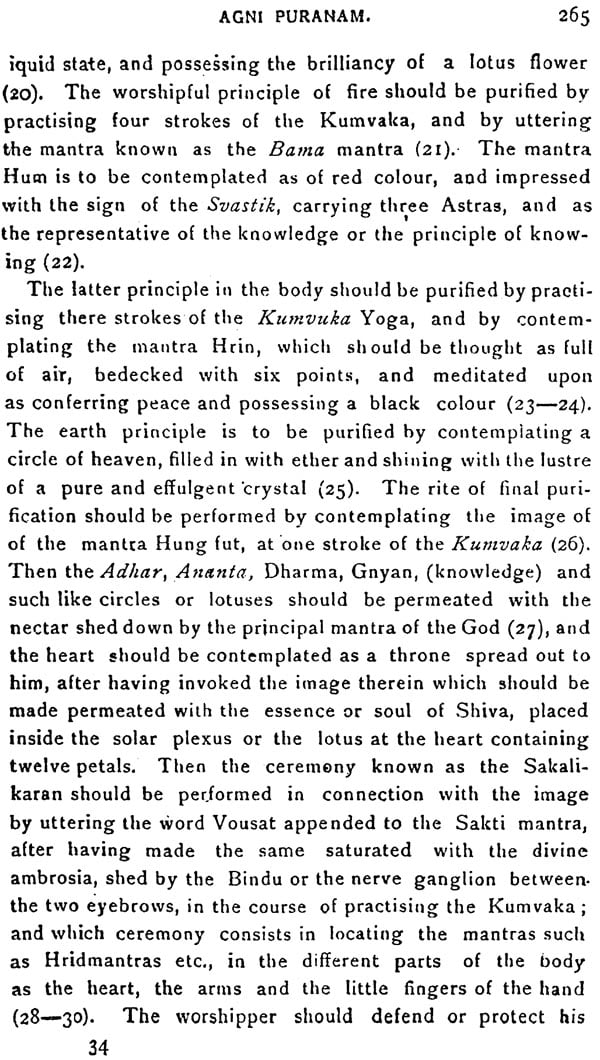
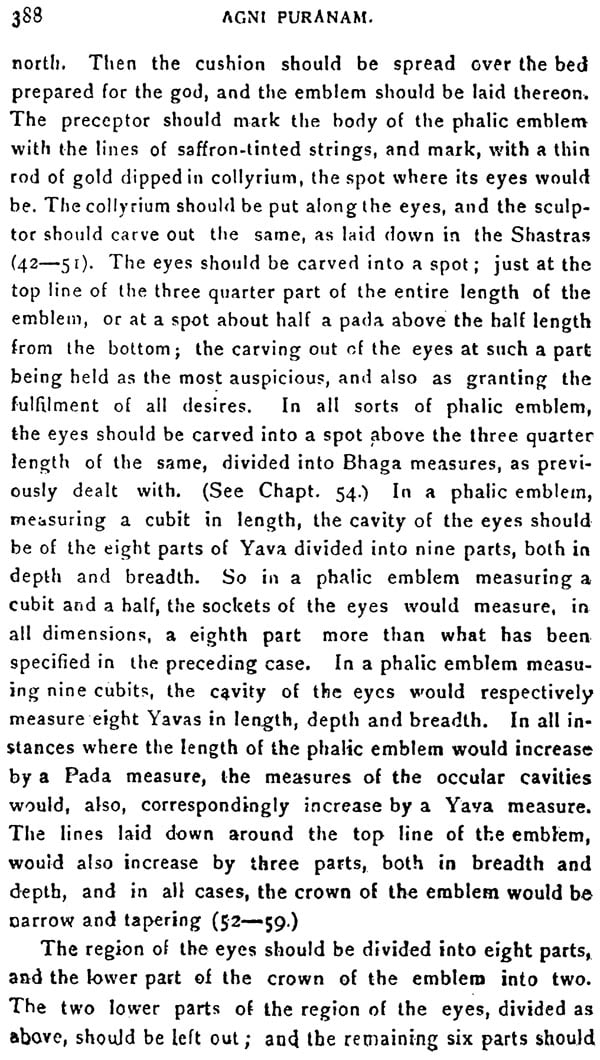
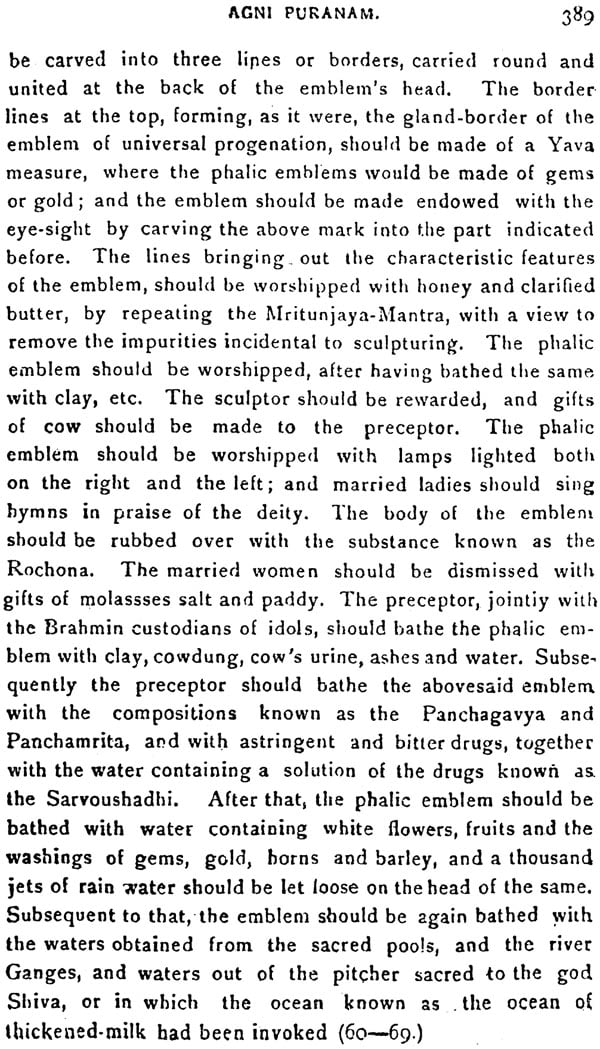
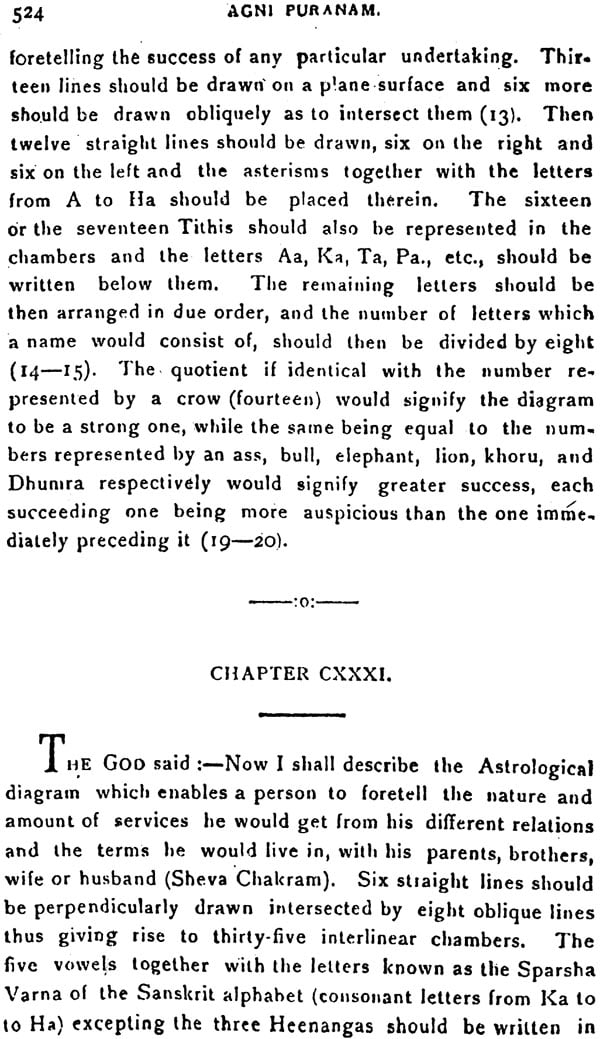
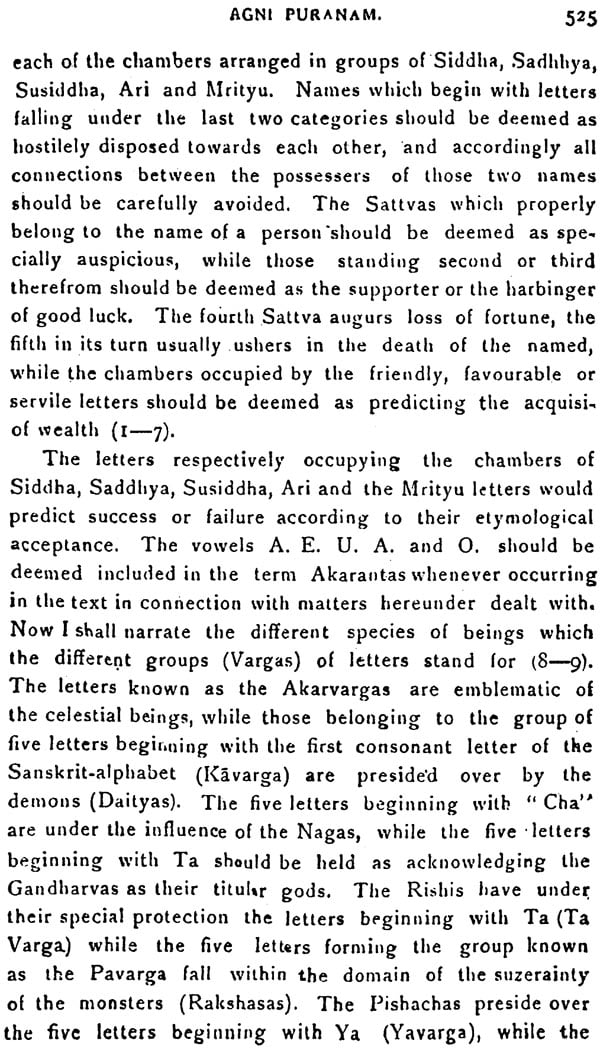
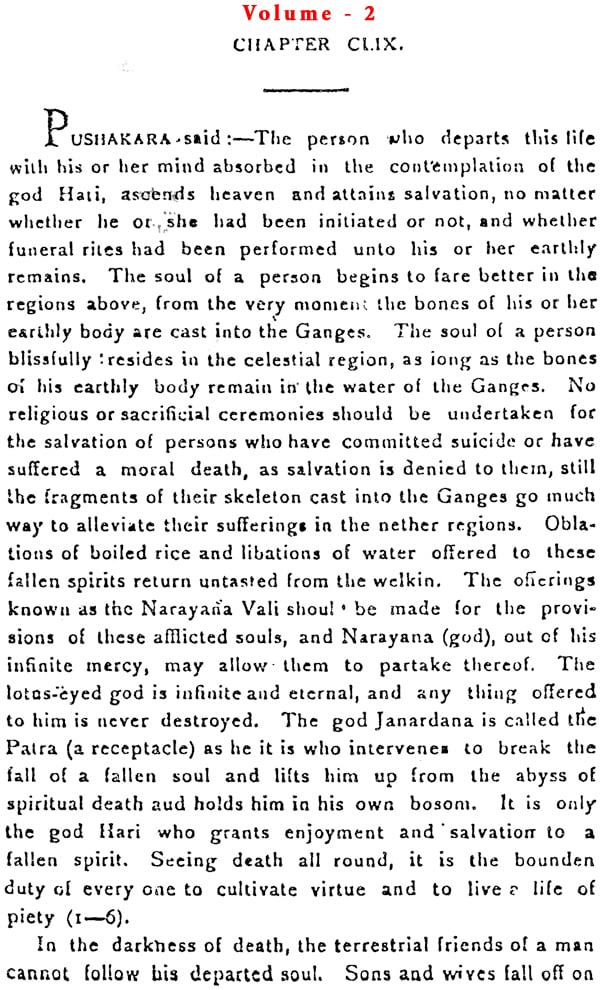
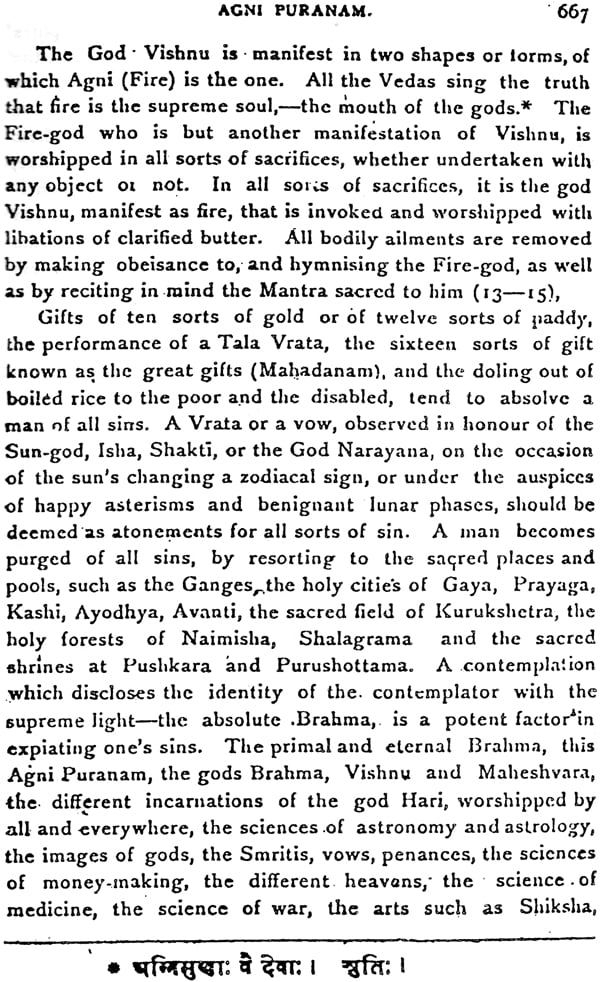

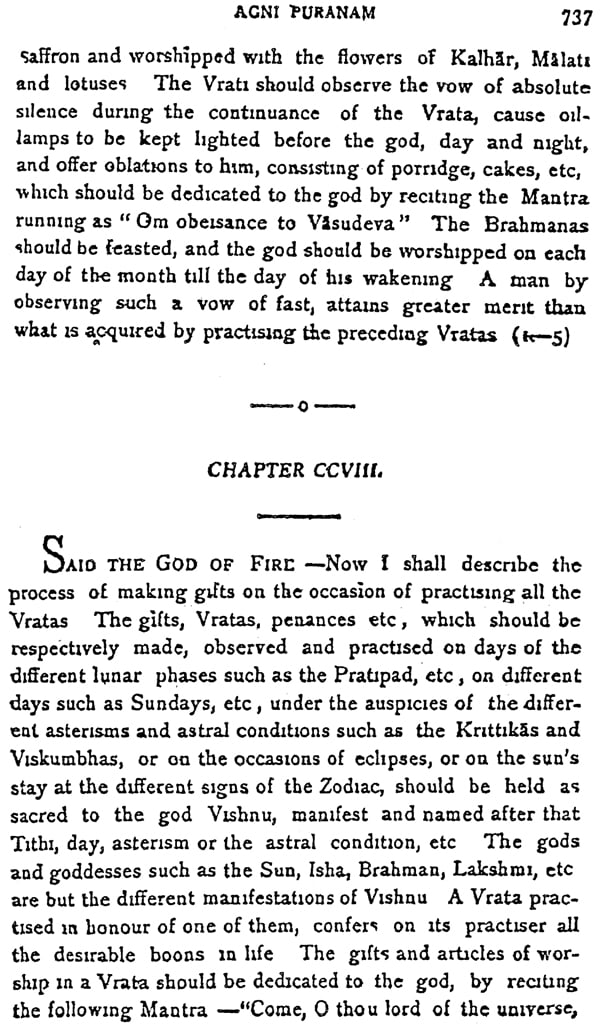
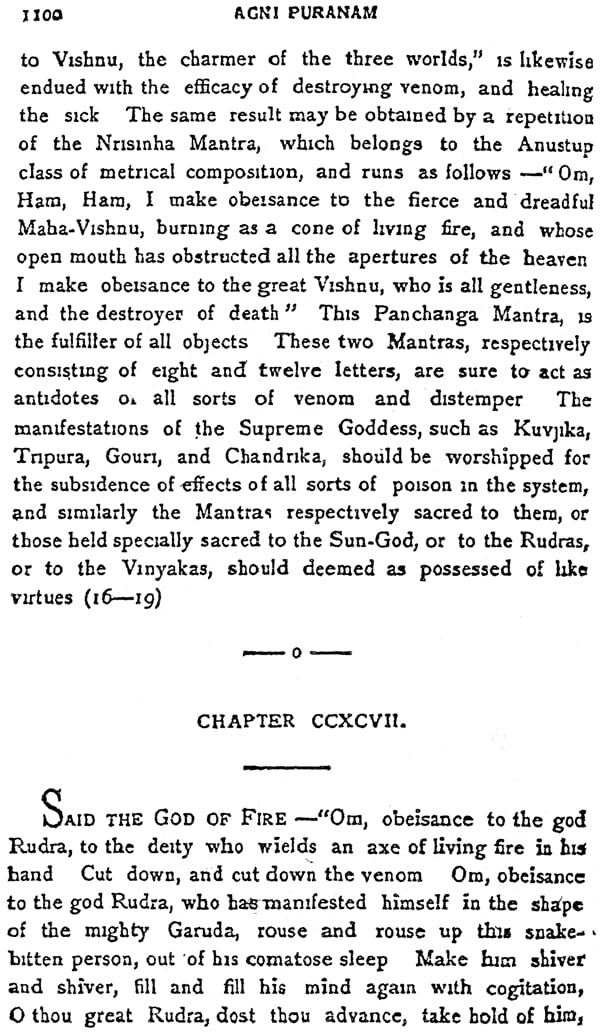
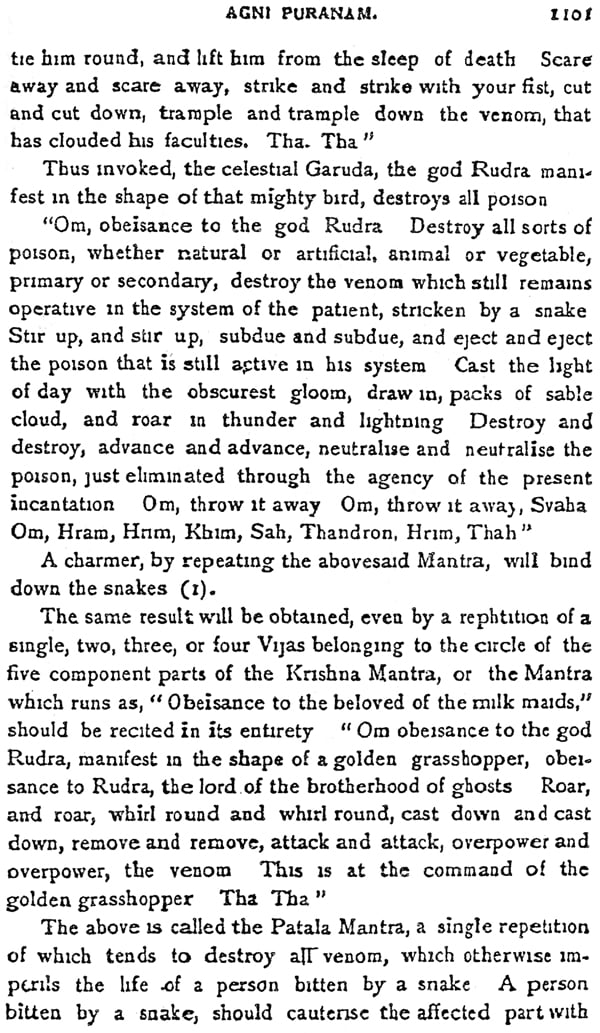

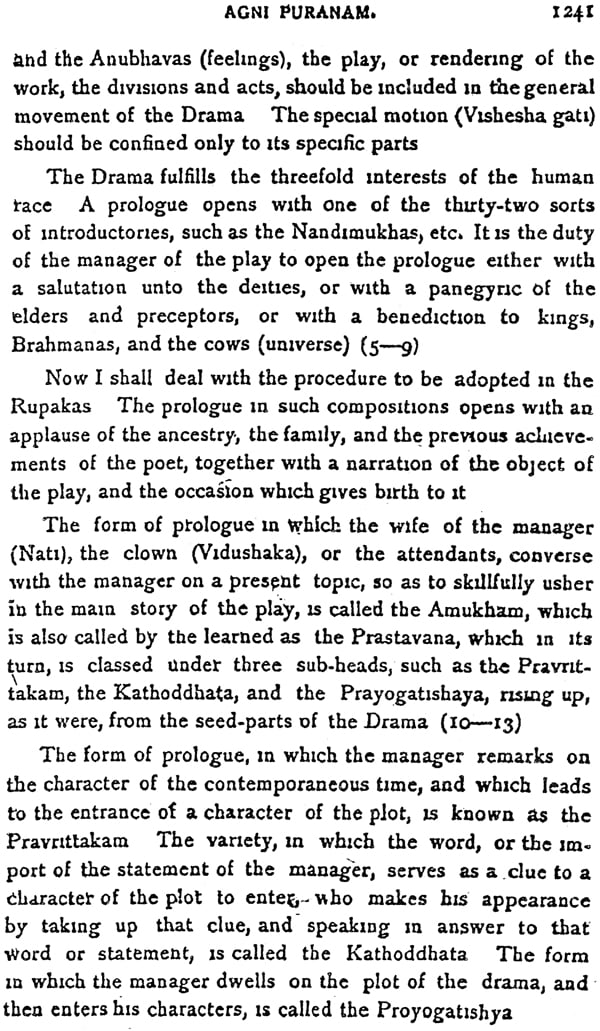
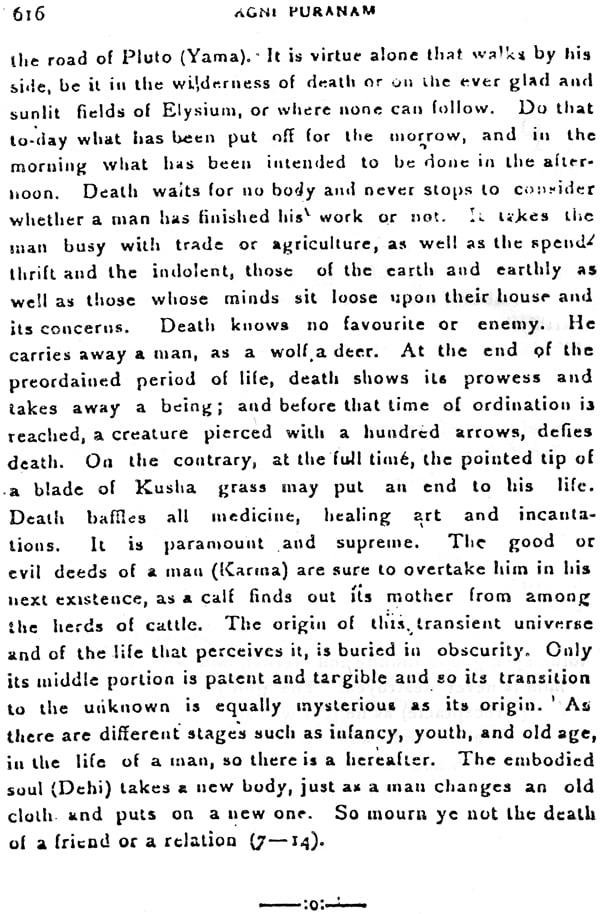
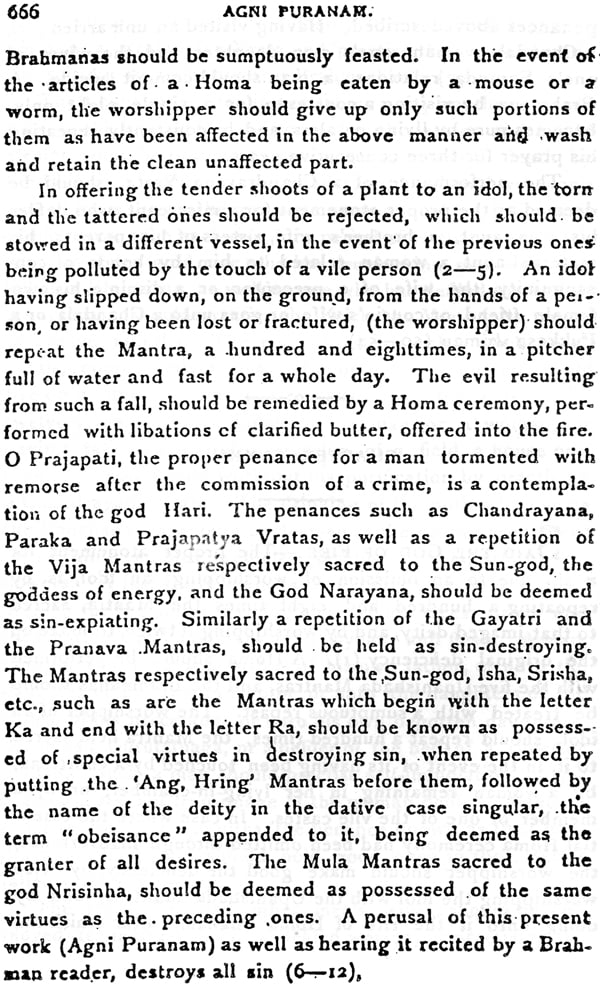
Delivery and Shipping Policy
- INTERNATIONAL SHIPPING
- Rs.1000-1100/kg
- ESTD. Delivery Time: 2-3 weeks (depending on location)
- Bubble Wrapped with Extra Padding
- NATIONAL SHIPPING
- NCR: Rs. 30/half kg
- Standard: Rs. 80/half kg
- Express shipments also available on Request
- ESTD. Delivery Time: Ranging from 1-4 days up to 7 business days (Depending on your choice of Delivery)
- TRACKING
- All orders; national or international, will be provided with a Tracking ID to check the status of their respective orders
- Depending on the Shipping Service, Tracking ID may be used on their respective tracking portals
Frequently Asked Questions (FAQs)
Domestic Shipping: 3-4 Days (after shipping)
International Shipping: 1-2 weeks (based on your location)
You will receive an email once your order has been shipped or you can email us if you didn't receive tracking details (info@mlbd.co.in)
Every book that we sell is the latest edition except all the rare books
Yes, we do provide free shipping, only on domestic orders (within India) above Rs.1500






![Advaita Vedanta mein Gyan evam Bhakri : Darshnik Vimarsha [Knowledge and Devotion in Advaita Vedanta : Philosophical Discourse] by Dr. Satyakam Mishra and Dr Karan Sigh](http://www.motilalbanarsidass.com/cdn/shop/products/ADVAITAVEDANTAMEGYAN_large.jpg?v=1675408211)




